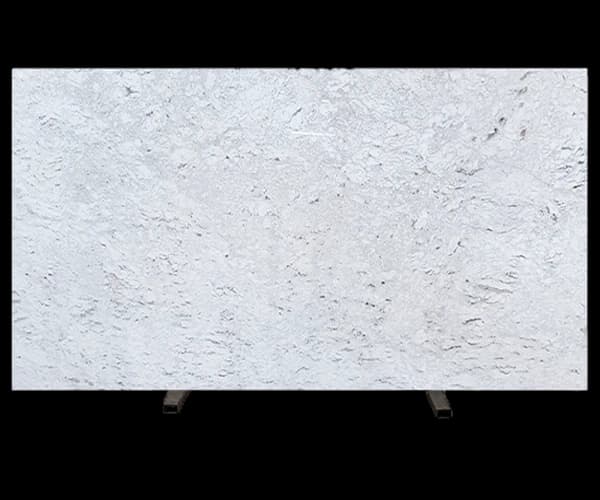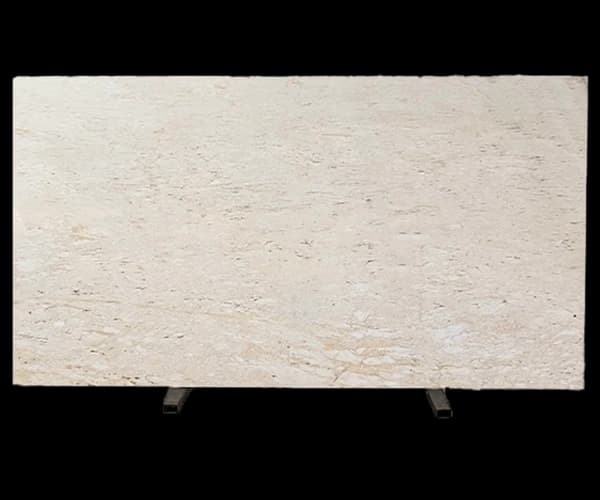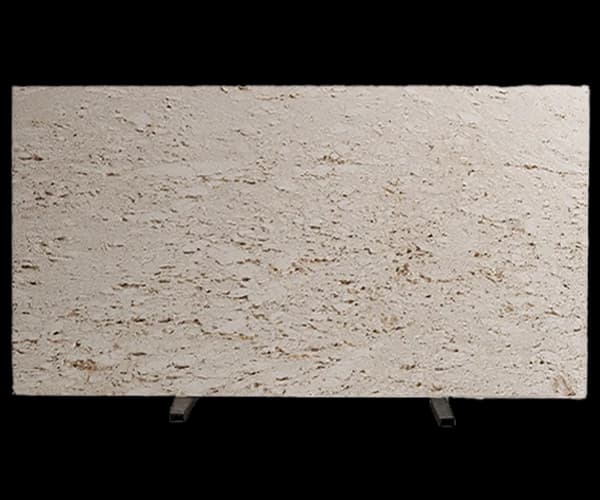Sourcing travertine blocks from Turkey? This buyer’s guide explains typical block sizes, grades, weight per cubic meter, vein orientation (cross-cut vs vein-cut), loading methods and export terms (FOB/CIF/EXW). As a quarry-backed Turkish travertine supplier, we help factories, fabricators and large projects plan predictable shipments with photo-documented loading and seal numbers.
Travertine blocks are the raw form of natural stone extracted directly from quarries. These massive pieces represent the first stage of travertine production, later cut into slabs, tiles or customized shapes for construction and design. Turkey, with its abundant travertine reserves, is one of the largest exporters of blocks worldwide, supplying material to factories, distributors, and projects across the globe.
Travertine blocks are available in Ivory, Light, and Antico variations, reflecting the same natural tones seen in slabs and tiles. At the block stage, color selection is critical, as it determines the final appearance of slabs, tiles, and other processed products. Buyers often request specific shades for consistent large-scale projects. Ivory offers clean, bright tones, Light adds warm beige versatility, and Antico provides rustic character. Quarries sort and grade blocks to ensure customers receive the most suitable material for their needs.
Bright creamy background with subtle pores. Ideal for producing slabs and tiles aimed at modern interiors where consistent shade is important.
Warm beige tones with balanced veining. A versatile choice for high-volume tile and slab production due to stable color demand.
Rustic, character-rich look with pronounced cavities. Great for tumbled/antiqued finishes and exterior design concepts.

Ivory blocks deliver bright tones and are often selected for high-end interiors where light reflection and elegance are priorities.

Light travertine blocks are versatile, yielding beige slabs and tiles that suit both residential and commercial projects.

Antico blocks provide rustic tones with antique character, often processed for Mediterranean-inspired projects and outdoor designs.
While blocks are raw materials, their processing defines the finishes available in the final products. Once blocks are cut into slabs or tiles, they can be polished for a glossy look, honed for matte elegance, brushed for texture or tumbled for rustic appeal. The finish chosen depends on the project’s aesthetic and functional requirements. Proper processing ensures durability, consistency, and the unique natural beauty of travertine.
Cross-cut slices perpendicular to the bedding, creating cloud-like movement and more uniform looks—popular for floors. Vein-cut runs parallel to the bedding, showing linear veins suited to feature walls and bookmatched panels.
Grades are based on color uniformity, pore density, structural soundness and size. Tighter selection supports premium polished/honed finishes; open selections are ideal for tumbled/brushed looks.

Blocks cut into slabs can be polished to reveal veining and provide a reflective finish for luxury projects.

Block-cut slabs can be honed to achieve a smooth, matte surface suitable for modern interiors.

Brushed finishes add subtle texture to block-derived slabs, enhancing grip and warmth.

Tumbled processing of smaller block cuts creates antique-style tiles with rustic charm.
Travertine blocks themselves are rarely installed directly in construction but instead serve as the foundation for slabs, tiles, and custom products. Their applications span residential, commercial, and urban projects worldwide. Exported to factories, they are cut into large slabs for countertops and cladding, smaller tiles for flooring, and even mosaics or pavers. Blocks also allow for custom shaping into architectural elements such as columns, fountains, and sculptures.
Select blocks with dimensions that match your gang-saw, with stable color and minimal defects to maximize yield. Vein-cut or cross-cut selection should follow project requirements.
Prioritize color demand (Ivory/Light) and pore structure that works with filled or unfilled products. Target block sizes that minimize off-cut waste for 600×600 and 600×1200 formats.
Use coordinated lots with consistent shade. Plan block-to-block continuity for facade or lobby runs, and reserve extra material for future maintenance.
Travertine blocks are sawn into large slabs used for countertops, wall panels, and facades.
Blocks are cut into tiles for flooring, walls, and decorative applications.
Blocks can be shaped into columns, fountains, and bespoke architectural elements.
Travertine blocks are measured and graded at the quarry before export. Sizes vary, but typical dimensions range from 2.5 to 3 meters in length, 1.5 to 2 meters in height, and 1 to 1.5 meters in width. Weights can exceed several tons per block, requiring cranes for handling. Quality grading considers color consistency, structural integrity, and veining. Buyers receive technical reports with approximate density, absorption, and compressive strength values to ensure suitability for their intended processing.
Travertine blocks require professional handling due to their size and weight. They are transported from quarries to factories where they are sawn into slabs or cut into tiles. Proper storage prevents cracks and maintains quality. Processing includes cutting, finishing, and sealing to meet project requirements. Safety measures are essential during transport and fabrication due to the heavy loads involved.
We’ll get back to you shortly.


